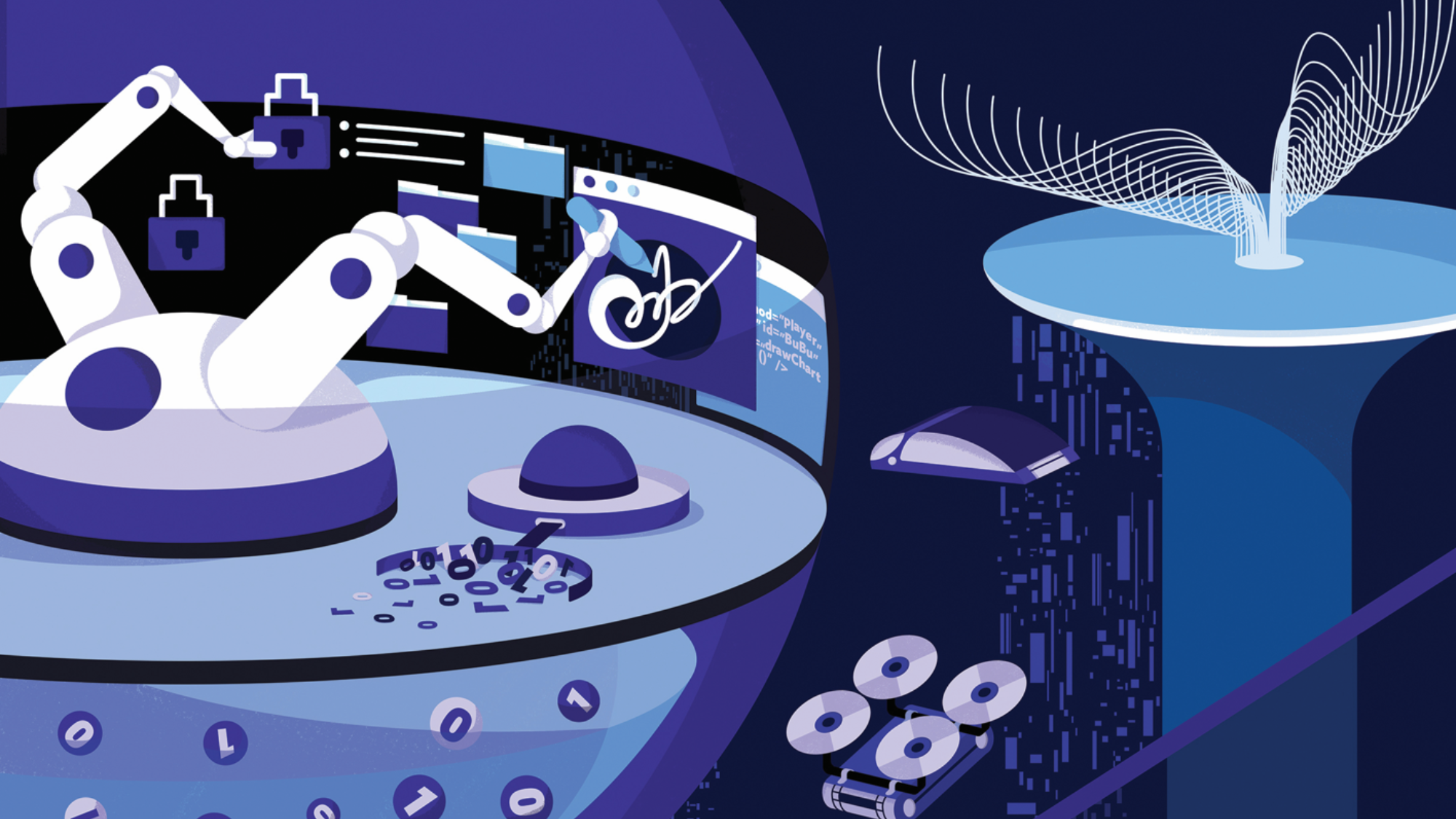The New World of Work: Alumni Experts Navigate The New Wave of AI and Big Data
In an age of misinformation, data doesn’t lie. There is a catch though: data needs to be focused and refined—if it’s too broad it can be useless or worse, cause you to make bad decisions.
Don’t Overestimate Data and AI
Whether you call it AI, data analytics, or big data—it’s all just statistics. “The more you get into things like machine learning and AI, it’s arguably statistical calculation without statistical inference,” says Neil Hamlett (EMBA’11), data analytics team lead for ECS, which provides enterprise data-strategy support to digital transformation of the U.S. Department of Homeland Security (DHS) Cybersecurity and Infrastructure Security Agency (CISA).
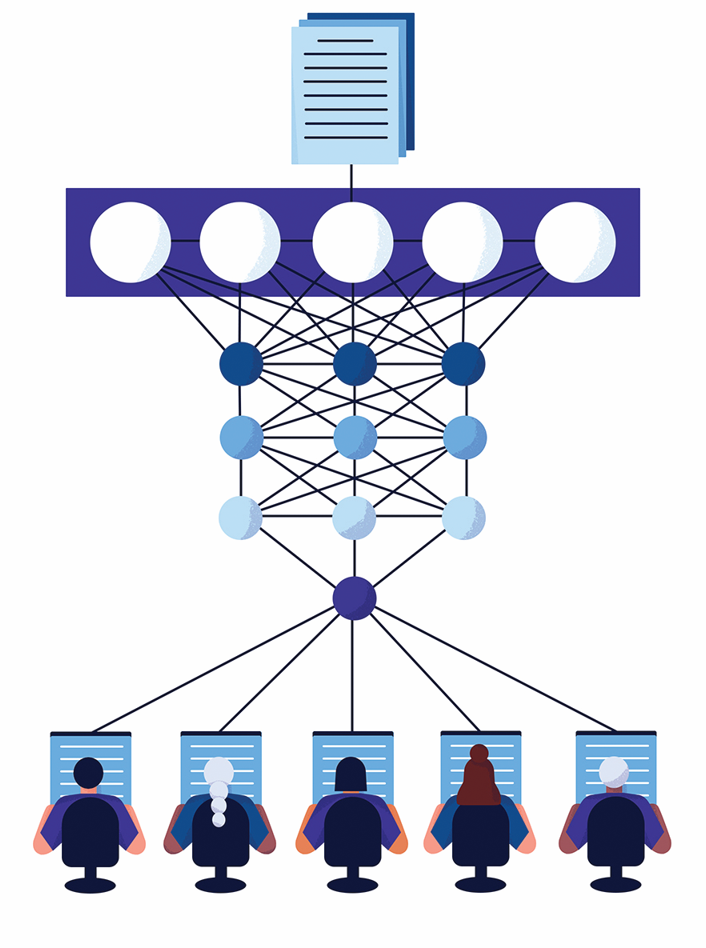
Right now, there’s just a lot of hype about what data can and can’t do. Hamlett uses the hype cycle created by Gartner Consulting to explain: “The premise is that technology-driven business processes go through this maturation process, and that the stages of the hype cycle are a triggering event, which then rises to the peak of inflated expectations, and people start to figure out that there’s a lot of hype, a lot of hokum,” says Hamlett, “and then it’ll slide into the trough of disillusionment. Then it goes up on the slope of enlightenment to a plateau of productivity.”
We are in the inflated expectations phase, he says. Keep in mind—this will eventually level out.
In the meantime, get very acquainted with what you want your data or AI to do, and what it can actually do. AI can’t, for example, think creatively—we still need the human mind for that—and companies using big data can easily run into cost, maintenance, and ethics issues.
Make The Right Hires
When dealing with big data, be sure you’re hiring people who know the technology well enough to recognize its opportunities and pitfalls, but also someone who understands business strategy operations. In other words, you need someone who not only can read the data, but someone able to advise decisionmakers and understand what sort of organizational and operational reconfigurations need to happen in order to get the greatest value out of the tech.
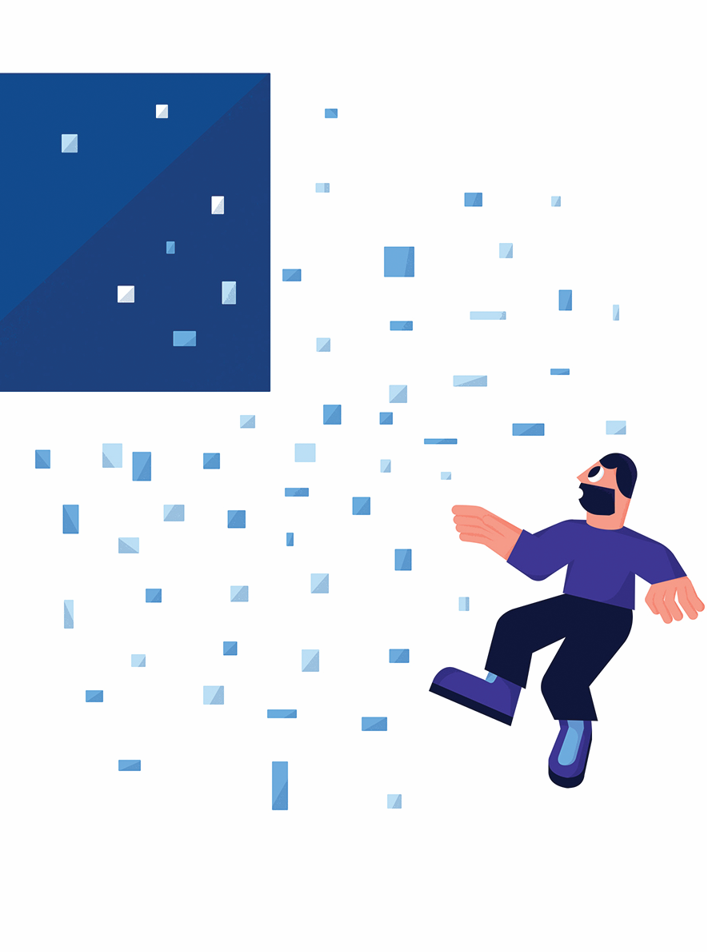
“Everybody’s going to have to be multidisciplinary,” says Hamlett. “Those are the key connections to be able to understand the opportunities and limitations with any given technology—and to be able to recognize that there are limitations.”
It’s not surprising that colleges and universities—including Georgetown—are adding data analytics majors to their curriculum and data scientists to their faculty. Schools already are educating the next generation that will help businesses bridge the data divide and translate numbers into actionable information.
More Data Doesn’t Mean Better Outcomes
We used to rely on the nightly news or stock reports to gain insights, but the truth is, some of our information is more available—and more comprehensive—than the news ever can be. “And we can report it much more quickly,” says Kristie Cole (IBP’21), co-founder of FORE, which uses open-source data to to foresee critical trends and equip its partners and clients with actionable insights to support real-time decision making, often in crises like a hurricane evacuation.
What’s more is that in an age of misinformation, data doesn’t lie. There is a catch though: data needs to be focused and refined—if it’s too broad it can be useless or worse, cause you to make bad decisions. Hamlett and other experts argue that organizations that get value out of big data have figured out what’s important to them and how to measure it effectively. “They’re not getting value out of big data because they’re using more of it,” says Hamlett. They’re getting value, because they’re using the right data. You design the organization and your operations so you get the measurements of what matters, and you understand the limitations of your measurements.”
Another tip from Cole, if you are opting to use big data—or more of it—always compare it to historical data. “If you don’t compare new data to historical data, you may think you’ve made some discovery or uncovered some outlier that doesn’t actually exist.”
Be Prepared To Pay
Technology isn’t cheap, so be prepared to pony up. It’s not just paper conversion, it’s data security, data architecture, data integrity, system access, and don’t forget the employees or third parties who manage all of it. Remember though, you do have options: “There has definitely been an acceleration in what I call ‘democratizing data information’ because the computer power has tremendously improved,” says Keihan Sedghi (EMBA’97), business process optimization and automation leader at Deloitte Consulting. “The cloud environment and cloud computing was a major contributor.”
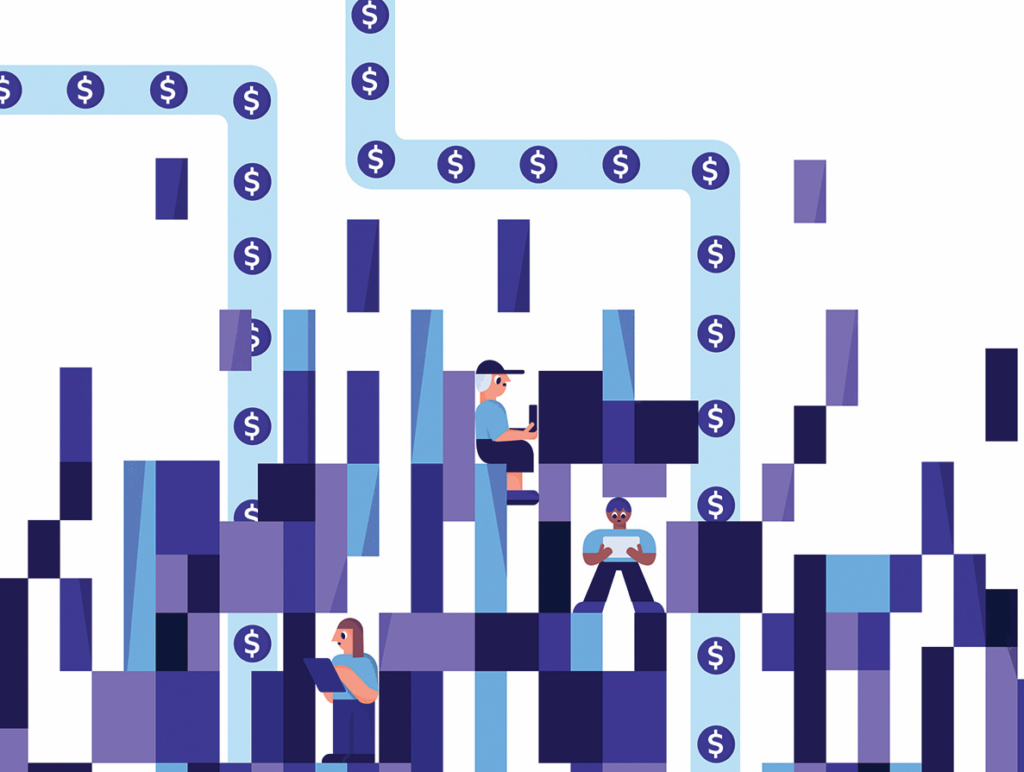
FORE’s whole business model depends on open-source data. While they save on the data storage and access, they pay on the automation. It’s all worth it to Cole and her fellow co-founder, Ryan Gillis. “We’re breaking down the barrier to entry for data access,” says Gillis. “The automation is pushing out insights from our platform that enables decision-making in real time. It eliminates that barrier to entry, giving the information that people need in the moment.”
Keep Your Ethics in Check
If you pay the right price, you can gain access to incredible data, but it also could be data that the consumer may find a bit unsettling. Think about the time you researched charcoal toothpaste and suddenly ads for the stuff started showing up on your social media news feed—maybe that particular company is a little too entrenched in their consumers’ lives and search bars.
Be sure to establish early on how far you’re willing to go and build policy around your tech ethics— then make that policy public. You run the risk of losing customers if they find your ethics policy wanting, invasive, or nonexistent. “At FORE, we use opensource geolocation data, and we look at it en mass to identify patterns and outliers,” says Cole. FORE takes it one step further by using anonymous data and by passing all their own data-driven decisions through their in-house ethics committee.
Prepare For a Culture Shift—And Help Foster It
For people who have been doing these jobs without new tech for years, this will be a major shift in the way they’ve always operated. Invest in training and resources to show employees the opportunities in digitization and tech. Bring them along for the ride, which creates less fear and makes people feel a part of the process.
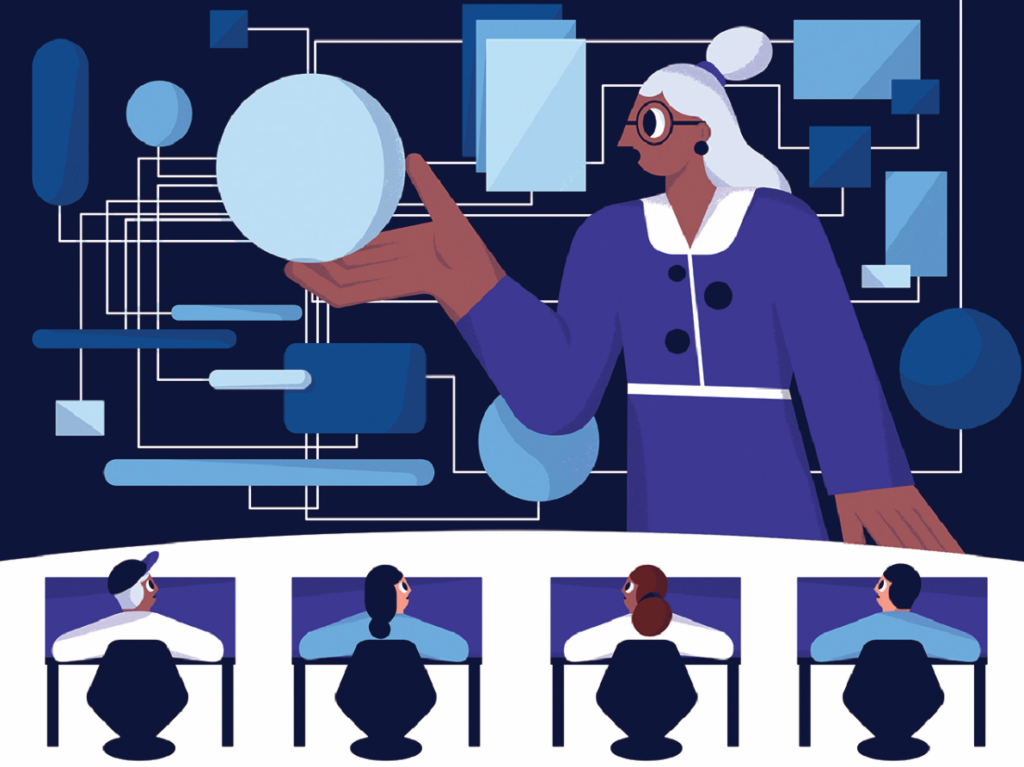
“Culture is a big, big issue,” says Sedghi. “Take insurance claims processing, for example. The people who actually used to do the work were very accustomed to paper and holding it physically in their hand. They may not be as comfortable doing anything on the computer because they don’t trust it.”
Ultimately, he says, you’re combatting not just a fear of the tech but an employee’s fear of losing their job—or being left behind for someone who is more tech savvy. “The new generation definitely is a lot more accustomed because that’s how they grew up,” says Segdhi. “They grew up with iPhones and other devices. So for them, change is a lot easier. But for people in their mid-forties and mid-fifties, who are typically senior folks within the organization, there can be more of a struggle to adapt. “But the commercial market dynamic is going to move in that direction anyway,” says Sedghi, “so the workers don’t really have a whole lot of options.”
In short: help them by being transparent and open about your tech goals—and invest in training to make their adaptation faster and easier to manage.
Fight Fear With The Positives
Speaking of fear, businesses will need to help consumers and clients overcome apprehension around AI and automated processes, embracing the fact that these technologies actually allow human workers to do more critical and creative thinking. It also streamlines our processes and allows us to be more efficient, while better understanding our consumers and what they’re looking for.
The biggest bonus: It’s all in real-time and in a secure environment. Think of it as balancing your checkbook, says Sedghi. “You don’t have to go to branches anymore, you do everything online. And the underpinning for that is automation, but it’s also access to reliable and secure data. A few years ago, even if people wanted to do more digital transactions, the technology wasn’t there, security wasn’t there.”
It is today. So it may just be that the fears of your team are carry-overs from five or even 10 years ago—and we’re already living in a different world. It’s new territory, to be sure, and most businesses will be feeling their way through it. But Sedghi, Gillis, Cole, and Hamlett all agree that if you’re aware of its limits and its powers, the future of AI and data will drive more strategic business decisions and stronger organizations.
This story was originally featured in the Georgetown Business Spring 2023 Magazine.
